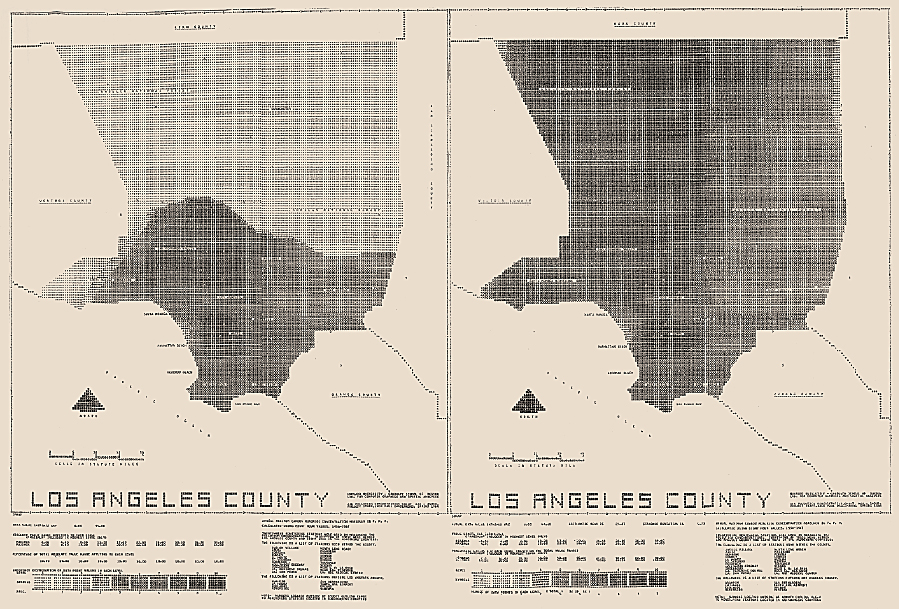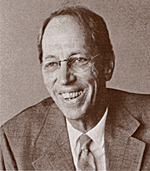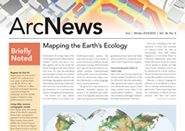This year marks the 50th anniversary of the founding of the Laboratory for Computer Graphics (LCG) at Harvard University. A two-day commemoration is planned, April 30 to May 1, as part of the annual conference of the Center for Geographic Analysis at Harvard. This public event will bring together alumni of the lab, historical geographers, and contemporary scholars in geographic representation to reflect upon midcentury innovations in computer mapping and the implications of these developments for the field of GIScience and its related industries.

Undoubtedly, the story of Esri and ArcGIS partially began in the basement of Memorial Hall, just north of Harvard Yard. It is a story that was traced by Nick Chrisman in his 2006 Esri Press book Charting the Unknown: How Computer Mapping at Harvard Became GIS. LCG was founded in 1965 by the late Howard Fisher, a 1926 Harvard graduate who was then a lecturer at Northwestern University. Fisher was an architect who developed innovations in prefabricated housing and later consulted on veteran housing following World War II. However, his greatest interests were in creativity and problem solving, and that led him to computer mapping.
The establishment of the LCG within the Graduate School of Design (GSD) formalized geographic inquiry at Harvard University. Harvard had been without a geographer on its faculty since 1956, the year of Derwent Whittlesey’s death. Indeed, the closure of the Institute of Geographical Exploration in 1951, following the demise of the subject and department of geography at Harvard in 1948, created a sizable void—and an eventual (if uneasy) opportunity for expansion.
The decision by Harvard president Jim Conant to remove the subject area from the curriculum sent waves through the discipline and remains central to the story of the development of geography on this continent in the 20th century. Seen in another light, Harvard’s loss would see the establishment of a new and energized quantitative geography at public flagship universities.
Ed Ullman left the faculty as the Harvard department crumbled and joined the geography faculty at the University of Washington. He attracted a cohort of graduate students that would come to reshape the discipline. These students, including Brian Berry, Dick Morrill, Bill Bunge, and Waldo Tobler. He also worked with Bill Garrison (in geography) and Ed Horwood (in civil engineering). Horwood, alongside these research assistants, would develop software for the IBM 709 called CARD MAPPING.
Horwood took his software on a road show. In August 1963, he offered a short course at Northwestern University that Howard Fisher attended. Vexed by the graphic output of the Horwood method, Fisher worked with a programmer, Betty Benson, to create the synagraphic mapping system (SYMAP). In an internal memo, recalling these founding moments, Fisher wrote: “As to SYMAP there is no question that Ed’s course led to its development—but as a form of rebellion against his so-called maps which were merely numbers printed on plain white paper.”
As Fisher noted: “I am not a geographer and I was not a cartographer until perhaps that Saturday morning in 1963 when I invented the basic concepts upon which the SYMAP computer mapping program is based. Since that time, however, I have been engaged exclusively upon the problems of thematic map design.”

Dean Sert of GSD hired Fisher away from Northwestern in 1964, and the SYMAP system came to roost in Cambridge, Massachusetts, in February 1965. With support from the GSD, Fisher founded LCG and put forward a proposal to the Ford Foundation in September 1965. Harvard was awarded $308,000 (translated into today’s buying power, that would be approximately $2.3 million).
That sum came with a sizable goal as stated by Fisher: “To help raise the performance level of professional persons in city and regional planning and related fields through the more extensive and more sophisticated use of factual information—then as now increasingly made possible by the expanding field of computer science in combination with advanced statistical techniques, systems analysis, and similar analytical and decision-making procedures.”
The directives of the Ford Foundation stipulated that the money was to be spent in its entirety by 1970. As director, Fisher began expanding the lab’s staff. To do so, he reached out to Horwood, as well as his students and assistants. These included Waldo Tobler, Clark Rogers, and Brian Berry.
In addition to recruiting personnel, Fisher recommended the following sources of cutting-edge scholarship in quantitative spatial science: Locational Analysis in Human Geography (1965) by Peter Haggett, Quantitative Geography (1967) by Bill Garrison and Duane Marble, and Elements of Cartography (1960, 2nd edition) by Arthur Robinson, as well as works by Eduard Imhof, Armin Lobeck, and Gordon Dickinson.
Fisher supported hiring Allan H. Schmidt as assistant director of the Lab in March 1967. Schmidt had previously worked as assistant director of the Urban-Regional Research Institute at Michigan State University (MSU), which was designing a gaming instrument for planning. Schmidt was an advanced user of SYMAP, who had even authored a user’s guide for MSU.
In 1966, 10 years after the death of Whittlesey, GSD appointed Bill Warntz as professor of theoretical geography. Warntz, who joined the lab and brought funding from the Office of Naval Research, eventually became its director in 1968. Warntz, a PhD in economics from the University of Pennsylvania, also brought a spatial analytic focus to the Lab, marked by the addition of and Spatial Analysis to the lab’s name. Warntz would join a lab engaged in further development of computer mapping techniques including basic research on interpolation methods as redesigned by Donald Shepard, a freshman in Fisher’s Harvard course on problem solving.
By 1967, the lab, now known as the Laboratory for Computer Graphics and Spatial Analysis (LCGSA), had enrolled over 500 participants worldwide in its SYMAP correspondence course—making SYMAP to the most widely known computer mapping program.
Students at GSD worked directly with SYMAP in their design projects. Carl Steinitz, who first met Fisher in 1965 while finishing his graduate fellowship at MIT, had joined the faculty at GSD and worked with SYMAP to understand development and conservation efforts on the Delmarva peninsula (Delaware-Maryland-Virginia).
With these kinds of experiences in mind, Fisher encouraged a recent master in urban design graduate of the University of Minnesota, Jack Dangermond, to join the lab while pursuing a master of landscape architecture degree at GSD. Dangermond used SYMAP to study air pollution. He drew on those techniques after graduating in 1969 to found, with his wife Laura, a consulting firm called Environmental Systems Research Institute.
From SYMAP to the Polygon Overlay Information System (PIOS) and AUTOMAP at Esri, computer mapping emerged as an expression of an experimental and creative process. At a time when computer mapping is taken as an object of—rather than just the vehicle for—innovation, GIS practitioners may easily take this for granted. Instead, Howard Fisher’s approach—not as a geographer or even as a cartographer—was to begin with “the problem as a problem,” where our most trusted methods may actually disguise other ways of thinking about the solution.
While the lab would wax and wane with the selective interests of Harvard and GSD, the 50th anniversary conference this spring will serve to recall and elevate those most serendipitous yet serious discoveries in the advent of the digital map.
About the Author
Matthew W. Wilson
Department of Geography, University of Kentucky, Center for Geographic Analysis, Harvard University
Selected Bibliography
Chrisman, Nicholas R. 2006. Charting the Unknown: How Computer Mapping at Harvard Became GIS. 1st ed. Redlands, CA: ESRI Press: Independent Publishers Group (IPG) distributor.
Fisher Papers. Harvard University Archives. Pusey Library, Harvard University, Cambridge, MA.
Janelle, Donald G. 1997. “William Warntz, 1922–1988.” Annals of the Association of American Geographers 87 (4):723–731.
Steinitz, Carl. 2014. “The beginnings of geographical information systems: a personal historical perspective.” Planning Perspectives 29 (2):239–254.

